As a Dungeon Master, there are many different ways that you can communicate information about your campaign world to your players. These straightforward methods of communicating vital lore have their pros and cons, but we’re going to talk about a more subtle type of worldbuilding that lets your players learn about your campaign setting through texture and feeling, rather than through clunky exposition dumps.
We’re talking about subtle worldbuilding today—specifically, worldbuilding through equipment.
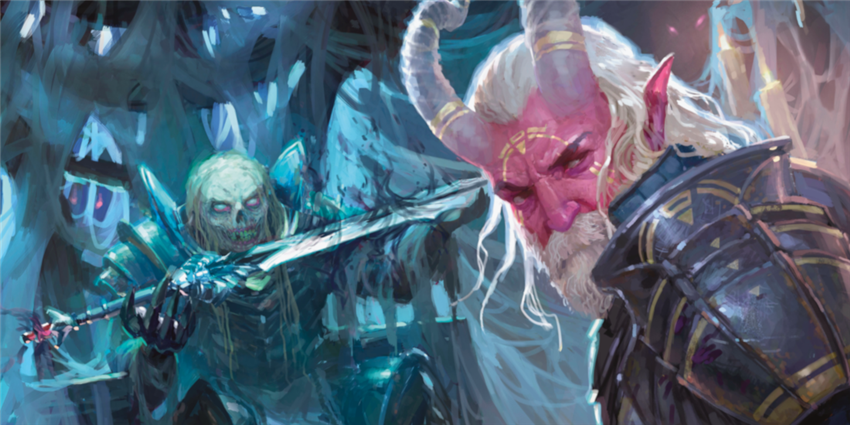
The Power of Subtle Worldbuilding
What we’re going to discuss today is a high-level DMing technique. Pulling subtle methods of worldbuilding off require a lot of practice and a high level of confidence in your understanding of your campaign setting. If you try to use methods like this in a game and it takes months of play for your players to pick up on it, that’s okay. Not only will you become better at using subtle worldbuilding methods the more you use them, but these techniques take a long time to pull off. They’re like using spices while cooking; most don’t draw attention to themselves.
First, a quick definition. Worldbuilding is the act of creating any sort of noun that defines your fictional world. A noun is anything in the broad topic of people, places, and things, ranging from things as dramatic as legendary heroes to capital cities to ancient artifacts, to things as simple as a nation’s regional cuisine, the type of boats used for kelp-harvesting in a coastal town, and so forth. Worldbuilding happens twice in any D&D campaign—when the DM (or sometimes a player!) creates the information, and when the DM imparts that information to their players. This article is about the second kind of worldbuilding, because the way DMs communicate the details of their world to their players is just as important as the information itself. That information can be communicated directly or it can be communicated subtly.
Direct communication is when a DM tells their players about the world. When executed poorly, direct communication is often done through a monologue by a wise old sage explaining the history of the cosmos or a villain explaining their evil plan. This type of communication can be less charitably called expository worldbuilding, because it involves the DM just giving players a lore dump. Exposition makes all but the most invested players check out and start looking at their phones under the table. Why? Because the story isn’t theirs anymore. Lore dumps are the quickest way to communicate to players that the game they’re playing is really the DM’s story, and they’re just playing in it.
Indirect communication, or subtle worldbuilding, occurs when a DM communicates the details of their world by showing the players important things about the world, rather than telling the players about them. Subtle worldbuilding techniques allow your players to discover the things they care about in your setting for themselves, rather than listen to you deliver a boring lore dump. Through this method, the players learn lots of little bits of information over a long period of time. As these data points collect, players begin to notice patterns. Let them connect the dots themselves, only helping by reminding them of dots they may have forgotten over time. Your players will learn things about your world organically this way, and then once they’ve learned these things, they choose to act upon them. D&D campaigns transform for the better when players take charge of a campaign, making active decisions rather than passively following your plot. This is when D&D is at its most fun, because everyone is creating stories—not just the DM.
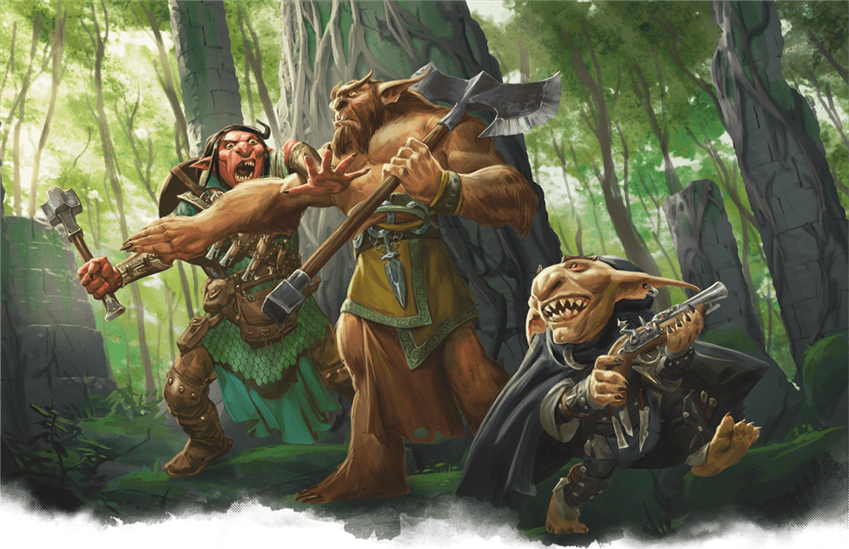
Worldbuilding through Equipment
All of that information was a bit academic, so let’s take a look at a specific example. Here’s how you can use equipment to tell your players about your world. Say we’re creating a kingdom that’s on the brink of war. Soldiers are amassing at the border between this nation and an empire that’s gobbling up little kingdoms like this one. War might not be a major part of your campaign (unless the players decide they want it to be!), but you want this war to be a part of the world. Here’s how you can use equipment alone to show that there’s a war going on.
Keep chapter 5: Equipment of the D&D Basic Rules open while you read, so you can easily reference the mundane equipment mentioned here.
Wealth
Social and economic classes played a huge role in the European Renaissance, which many D&D settings draw heavily upon. People could move between social classes far more readily than in feudal medieval societies, meaning that society was stratified more by wealth and prestige than by any sort of social caste. And class becomes very important in wartime, as the rural poor are the most vulnerable people of a society when an enemy comes pillaging. Poor folk are often either conscripted into service by local lords or joining mercenaries or even turning to banditry to make ends meet.
When your player characters are clearing out goblin lairs near rural villages, you can communicate how poor these villages are to your players by not having any item worth more than 5 gp be sold in shops. This instantly takes most weapons and armor off the table, save for simple weapons. Local village guards don’t have chain mail, but instead wear leather armor. If these guards have shields, then it’s because they made a crude wooden shield themselves—and it isn’t for sale. Even common magic items like potions of healing are the stuff of legend in these parts.
This information makes it abundantly clear that, if the adventurers want to buy better gear, they’ll need to go to somewhere with a bit more wealth. Here’s a chart that you can use to determine where different qualities of equipment can be purchased. You can make your setting richer or poorer (that is to say, with greater or lesser wealth inequality) by modifying where expensive items can be purchased. It also includes whether or not magic items can be bought or sold in this settlement. Since most magic items are effectively priceless, the Maximum Price of Item Sold column doesn’t apply to magic items.
Obviously, you are empowered to make exceptions—for instance, a village that raises elephants would be able to sell adventurers an elephant, even though it has a price tag of 200 gp attached. Likewise, certain items that exceed even a metropolis’s Maximum Price of Item Sold value, like a 25,000 gp warship, are exceptions to this chart, since they can only be bought directly from their creator.
Level of Wealth
|
Size of Settlement |
Maximum Price of Item Sold |
Magic Items Bought and Sold? |
|
Village |
5 gp |
No |
|
Town |
100 gp |
Yes, up to common |
|
City |
1,000 gp |
Yes, up to uncommon |
|
Capital City/Metropolis |
10,000 gp |
Yes, up to rare |
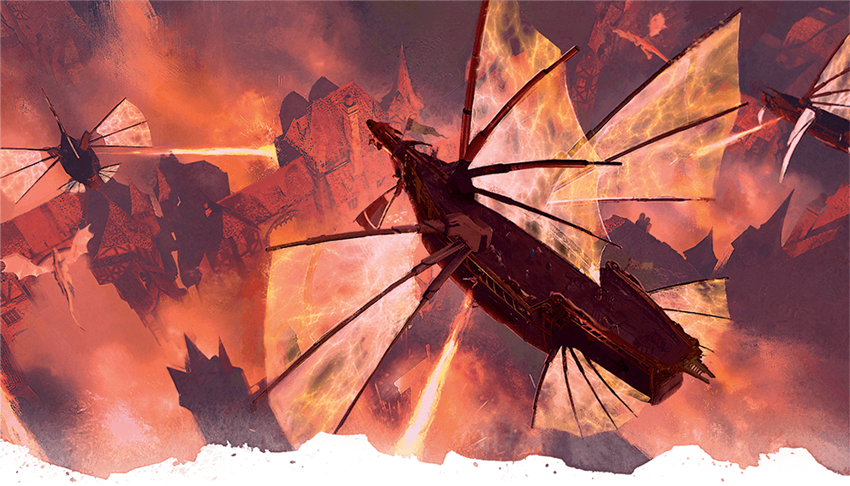
Scarcity
One tool of equipment-first worldbuilding is scarcity. War will soon be upon this land, and the powers that be have known for far longer than the common folk. Most players, when creating their characters, will choose armor of some sort to protect themselves. Wizards and druids rarely do so, but almost everyone who wants to fight up-close and personal will start play with some kind of armor. This armor is usually fairly low-quality, since 1st-level characters can’t afford high-quality gear like half plate or plate armor. Even paladins in heavy armor will usually start off with scale mail at 1st level. This is a great chance to do a bit of worldbuilding.
The powers that be have purchased (or expropriated) plate and half plate armor from all of the blacksmiths in the realm skilled enough to create such high-quality equipment. Judging by this chart, the vast majority of blacksmiths skilled enough to make half plate (which costs 750 gp) work in the city. Certainly there are some reclusive country blacksmiths that are an exception to our chart, but their stock of high-quality armor is sold out, too. Wherever the characters go, they find that expensive armor isn’t to be found. And the same goes for expensive spell components, like diamonds for revivify. What’s happening?
Over time, scarcity may cause them to ask questions about your world. Why can’t we find these things no matter where we go? Once they ask, you might have a blacksmith respond, “Sorry, they were all bought weeks ago. Armor like this takes months to make; I haven’t had time. Either way, I’m backordered.” They pursue answers further: who bought them all? “The king’s men,” the blacksmith replies. “They’ve ordered that all smiths in the land sell their plate armor only to the royal knights. I can feel a storm coming. Nothing ever good comes of the king buying up all my stock. Even the money I make is just enough for my family and I to weather what comes after.”
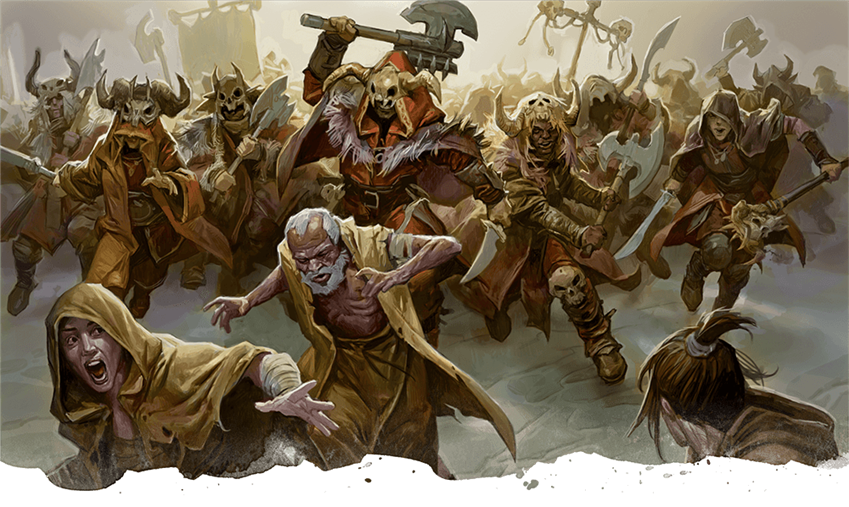
Surplus
Another tool in the worldbuilder’s toolkit is surplus. The opposite of scarcity, what does it mean when shops are overflowing with certain types of items? Perhaps the adventurers stop in a village that is known across the land for its potions of healing, a remarkable item that they shouldn’t even have a single one of, judging by our chart. This incredible shop will surely get the characters snooping about. What’s the source of their supply? Is there a source of potion ingredients in the nearby forest? If so, who makes them into potions? Or maybe the characters have learned that there’s a war going on and they make it their mission to protect this village from being taken over by the crown and forced into servitude making healing potions for the army.
The characters might even turn this simple act of subtle worldbuilding into a self-directed quest: find healing potion ingredients in the nearby forest and get them made into potions by the local witch. Suddenly, the players have taken control of the campaign. That’s amazing! Every single thing they do in this quest will be more meaningful to them because they chose this goal themselves, rather than meeting an NPC questgiver who asks them to find ten red mushrooms or something banal like that.
Other Techniques
These are powerful and broadly applicable tools that you can use to add depth and dimension to your world. They aren’t the only equipment-first worldbuilding techniques that exist, but they’re a good starting point. Think of other lens that you can use to indirectly communicate details about your setting to your players. NPC power is one, allowing you to tell them something about the world by how weak or powerful most NPCs are. Settlement size is another, since a nation with several huge cities feels wildly different from one with only small villages and one average-sized city.
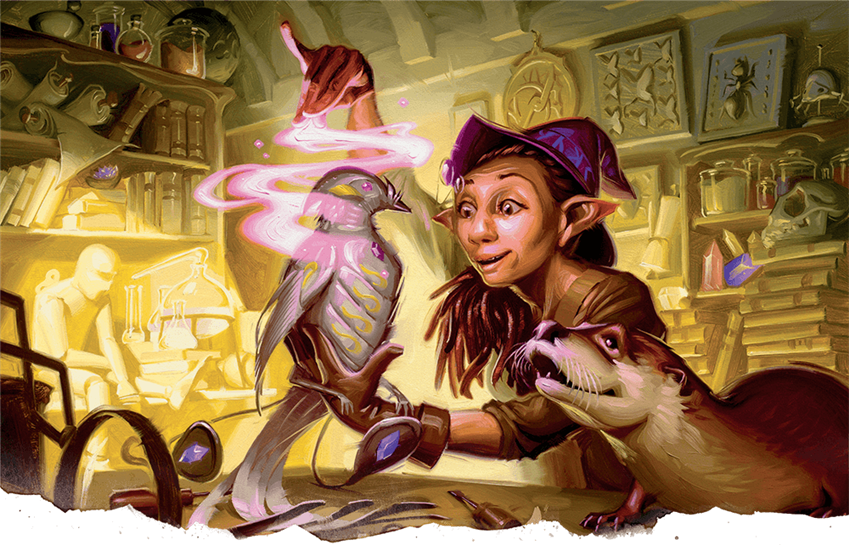
Using Both Techniques Together
One last word before we go. Subtle worldbuilding isn’t always better than direct communication. Small doses of exposition, tactically delivered when the information is most relevant, can clarify the stakes of an encounter or dungeon or even an entire adventure. The main strength of exposition is how efficient it is; word-for-word, exposition communicates a lot, quickly and clearly. It only becomes a problem when expositing comes monologuing, and short explanations balloon into interminable infodumps.
Most D&D campaigns benefit from starting with a healthy dose of exposition. This clears up important questions and gives your players stable footing in the fantasy world they’ve just stepped into. Simply telling your players three or four vital points of information helps the game start moving quickly. Once you’ve done this, ease off on the exposition for a bit and allow them to ease into the world you’ve created. If you ever feel like your story or your details have become murky, polish them up with a bit of clear, concise information, then back off. Play this push-and-pull well, and your players will feel totally immersed in your world.
What are other subtle worldbuilding techniques you’ve used in your games? Let us know in the comments!
Create A Brand-New Adventurer Acquire New Powers and Adventures Browse All Your D&D Content
 James Haeck is the lead writer for D&D Beyond, the co-author of Waterdeep: Dragon Heist, Baldur's Gate: Descent into Avernus, and the Critical Role Explorer's Guide to Wildemount, a member of the Guild Adepts, and a freelance writer for Wizards of the Coast, the D&D Adventurers League, and other RPG companies. He lives in Seattle, Washington with his fiancée Hannah and their animal companions Mei and Marzipan. You can find him wasting time on Twitter at @jamesjhaeck.
James Haeck is the lead writer for D&D Beyond, the co-author of Waterdeep: Dragon Heist, Baldur's Gate: Descent into Avernus, and the Critical Role Explorer's Guide to Wildemount, a member of the Guild Adepts, and a freelance writer for Wizards of the Coast, the D&D Adventurers League, and other RPG companies. He lives in Seattle, Washington with his fiancée Hannah and their animal companions Mei and Marzipan. You can find him wasting time on Twitter at @jamesjhaeck.








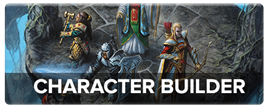
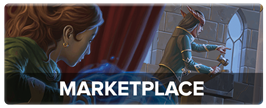

-
View User Profile
-
Send Message
Posted Apr 8, 2020Very cool, and useful for me. I'm about to start a campaign set in Bilgewater, Runeterra from League of legends with my family while on lockdown. This is a very helpful article, and will be using it for sure!
-
View User Profile
-
Send Message
Posted Apr 8, 2020Super helpful! I've recently started a longtime dream of mine and began crafting my own homebrew D&D world so this is extremely useful and much appreciated!
-
View User Profile
-
Send Message
Posted Apr 8, 2020Some great ideas in here James! Really loved the "Scarcity" take. Been trudging through Barovia lately and this was played up nicely in CoS to a similar affect to what you are describing.
-
View User Profile
-
Send Message
Posted Apr 8, 2020Excellent article. Oddly enough, I've always found worldbuilding the hardest thing about running and prepping D&D. I'd love to see a series on worldbuilding. I'm sure it would be a great help for me and many others.
-
View User Profile
-
Send Message
Posted Apr 8, 2020Reflavoring items has worked for me in the past. The PCs roll into town for session zero. They see guards. I use the stat block for guards from the MM, but another NPC calls them "pit monitors", they are carrying spears, but when they attack the PCs for "disloyal behavior unworthy of the Emperor's benevolence", they use statistically normal halberds, but I call them poleswords.
-
View User Profile
-
Send Message
Posted Apr 8, 2020Thanks so much!!! I love worldbuilding, and this was uber helpful
-
View User Profile
-
Send Message
Posted Apr 8, 2020Excellent article! The Level of Wealth Table is suuuper helpful!
-
View User Profile
-
Send Message
Posted Apr 8, 2020"Most D&D campaigns benefit from starting with a healthy dose of exposition. This clears up important questions and gives your players stable footing in the fantasy world they’ve just stepped into. Simply telling your players three or four vital points of information helps the game start moving quickly"
This is fantastic advice! Could you please give some examples of this sort of exposition?
-
View User Profile
-
Send Message
Posted Apr 8, 2020I Liked the article. I use a hybrid of the two approaches.
I give my players a few pages of background. Stuff active information gathering citizens would know about the world (They are hiring bounty hunters in City X due to increased humanoid raids). Once they develop their PCs I give them specific information - stuff they would know about their race/class that others may not know (Vikings have two orders of Paladins with these attributes - choose your order). Then I have a whole lot of stuff for them to discover about the world as they explore it. (Why are all the humanoids carrying bronze square coins instead of local currency?)
-
View User Profile
-
Send Message
Posted Apr 8, 2020Another technique I find useful is to periodically request players (or allow them to request) knowledge checks that use skills like history, religion, nature and arcana in order to learn something about a situation they are currently in and how the world around them impacts that situation. Based on the results of their rolls, I will divulge some useful world-building information and background that directly applies to their current situation or adds flavor to it so that they can take pride and awareness in their own character's personal knowledge and awareness of the world around them.
-
View User Profile
-
Send Message
Posted Apr 8, 2020I like the idea using scarcity to develop a story point.
-
View User Profile
-
Send Message
Posted Apr 8, 2020Oh my god, this was exactly what I was looking for. Can't wait for more in this series!
-
View User Profile
-
Send Message
Posted Apr 9, 2020Fantastic. Perfect for me right now.
-
View User Profile
-
Send Message
Posted Apr 9, 2020Very nice article. Personally I enjoy subtle world building, with details and information building over months or even years. I plan my worlds to have a timeline that would happen if the players do nothing, and then adapt it to the players action as they go. This gives me the motives for most of the major NPCs. One of the biggest ways this comes out is when players revisit an area, I make sure to not specific things that are the same and different such as shops that are closed or flourishing.
-
View User Profile
-
Send Message
Posted Apr 9, 2020Fantastic food for thought, and good timing for my campaign's needs!
-
View User Profile
-
Send Message
Posted Apr 9, 2020A method I find most useful is to write up page-long bites of my world written as "books" from the point of view of the people living in the world and then print them off. I then use these as handouts throughout my game. For example, if the characters walk into a library and happen to ask what's on the shelf I'll hand them one of these pages. I'll also often include them in caches of loot. The players seem much more invested in the lore if it's presented to them as treasure.
-
View User Profile
-
Send Message
Posted Apr 9, 2020Consider boxed text in published adventures. Not everyone likes reading boxed text out of the book, but you can also paraphrase it in your own words or whatever you prefer. The important thing is that it usually conveys useful information about what the party sees or knows. In particular, the boxed text at the start of any adventure often sets the stage for the adventure. Where it starts, and more importantly, how it starts/what starts it. An example from Baldur's Gate: Descent into Avernus:
Baldur's Gate: Descent into Avernus starts with the characters being called to the gates of Baldur's Gate by a Flaming Fist captain, where they see a flood of refugees coming from Elturel. The boxed text itself is a massive wall of text, but it tells the party what Baldur's Gate is like as a city, not only on the surface but also the true dynamics of the city. It talks about the refugees from Elturel, and the confusion over what happened there; it mentions the Flaming Fist, and recent events surrounding them; and finally, who the party's been asked to meet, and what they see by those gates when they go there looking for him.
The boxed text is very expository, but there's a lot of information there, and it's helpful in setting the tone of life in the city, and presenting the confusion over what's really happening (despite part of the truth behind that mystery being sort of obvious to players themselves from the title of the campaign :P).
-
View User Profile
-
Send Message
Posted Apr 9, 2020This was awesome to read. I am now looking for any more information on the same topic. Building a world from scratch is a daunting task, and I hope I can find more information here. Great article and excellent points!
-
View User Profile
-
Send Message
Posted Apr 9, 2020This is a brilliant article for me, as I'm currently in the middle of making a home-brew world for a campaign I will be running in lockdown. Hopefully there are more articles like this coming out soon to help even more with worldbuilding!
-
View User Profile
-
Send Message
Posted Apr 9, 2020Another great article, James. :-)